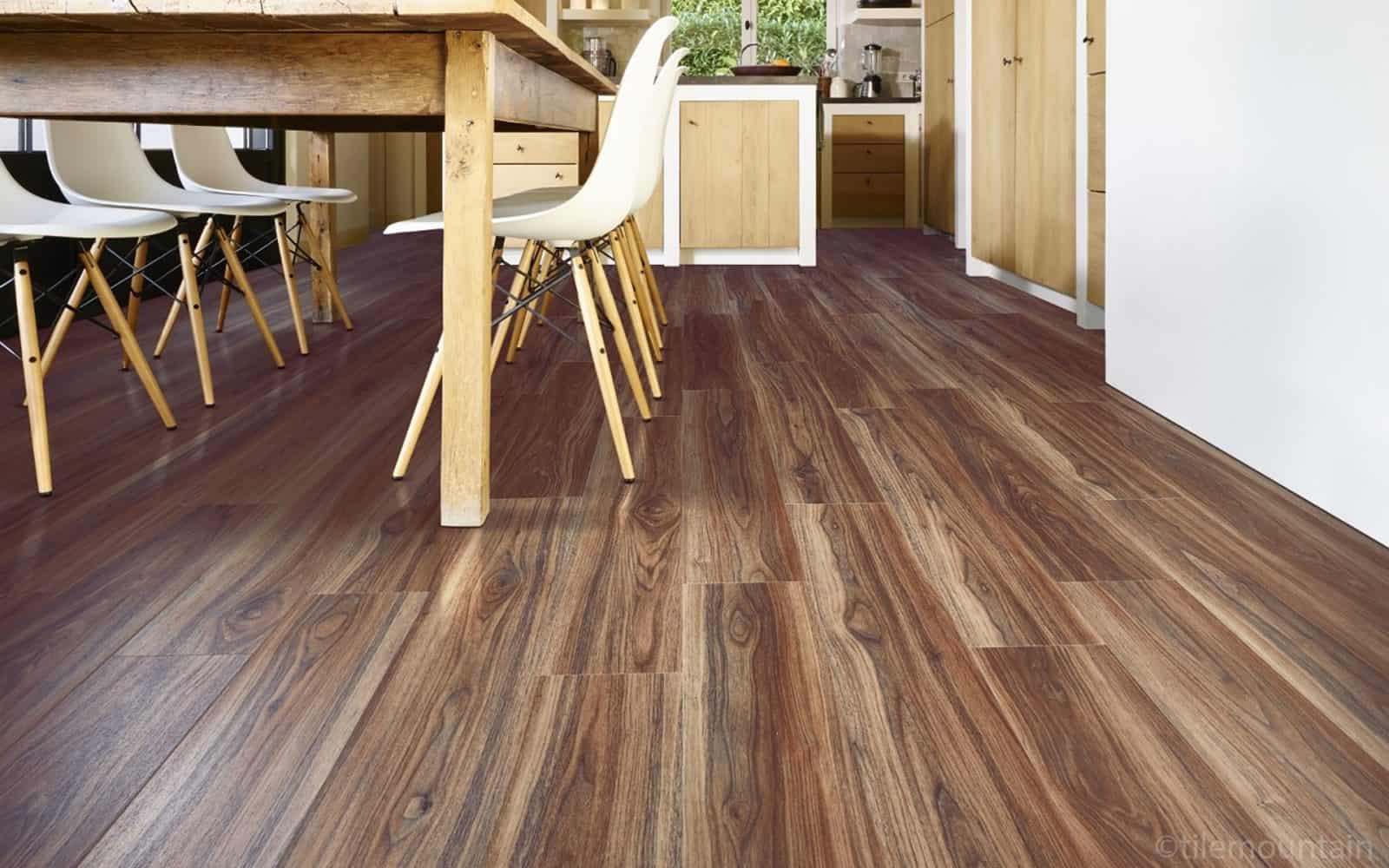
Pros & Cons of Vinyl
Pros & Cons of Vinyl
Vinyl
Advantages & Disadvantages of Vinyl include two key, this is a clear base and powder. They mix to form a blend, producing a glossy, nice look effect after complete. Shop here and check out our other services here.
Pour over the Bathroom, or solid top. They move through the floor as it cures and can with a paintbrush or roller to create effects such as swirls, ripples, craters, or waves. When the Bathroom hardens, these powders are in place, resulting in a beautiful, nice look.
Each epoxy Bathroom is special due to the nature of the powder holding. Skill and mind are critical to achieving the appearance and feel of the surface.
Metallic Epoxy include two key, this is a clear base and powder. They mix to form a blend, producing a glossy, nice look effect after complete.
Pour over the Art Panel, or solid top. They move through the floor as it cures and can with a paintbrush or roller to create effects such as swirls, ripples, craters, or waves. When the Epoxy hardens, these powders are in place, resulting in a beautiful, nice look.
Our Bathroom is special due to the nature of the powder holding. Skill and mind are critical to achieving the appearance and feel of the surface.
Metallic Epoxy Vinyl
Vinyl
Epoxy Bathroom include two key, this is a clear base and powder. They mix to form a blend, producing a glossy, nice look effect after complete.
Pour over the Bathroom, or solid top. They move through the floor as it cures and can with a paintbrush or roller to create effects such as swirls, ripples, craters, or waves. When the Bathroom hardens, these powders are in place, resulting in a beautiful, nice look.
Each epoxy Bathroom is special due to the nature of the powder holding. Skill and mind are critical to achieving the appearance and feel of the surface.
Metallic Epoxy Bathroom include two key, this is a clear base and powder. They mix to form a blend, producing a glossy, nice look effect after complete.
Pour over the Art Panel, or solid top. They move through the floor as it cures and can with a paintbrush or roller to create effects such as swirls, ripples, craters, or waves. When the Epoxy hardens, these powders are in place, resulting in a beautiful, nice look.
Our Bathroom is special due to the nature of the powder holding. Skill and mind are critical to achieving the appearance and feel of the surface.
Metallic Epoxy Bathroom
Advantages & Disadvantages of Vinyl
Epoxy Bathroom include two key, this is a clear base and powder. They mix to form a blend, producing a glossy, nice look effect after complete.
Pour over the Bathroom, or solid top. They move through the floor as it cures and can with a paintbrush or roller to create effects such as swirls, ripples, craters, or waves. When the Bathroom hardens, these powders are in place, resulting in a beautiful, nice look.
Each epoxy Bathroom is special due to the nature of the powder holding. Skill and mind are critical to achieving the appearance and feel of the surface.
Metallic Epoxy Bathroom include two key, this is a clear base and powder. They mix to form a blend, producing a glossy, nice look effect after complete.
Pour over the Art Panel, or solid top. They move through the floor as it cures and can with a paintbrush or roller to create effects such as swirls, ripples, craters, or waves. When the Epoxy hardens, these powders are in place, resulting in a beautiful, nice look.
Our Bathroom is special due to the nature of the powder holding. Skill and mind are critical to achieving the appearance and feel of the surface.
Metallic Epoxy Bathroom
Vinyl
Epoxy Bathroom include two key, this is a clear base and powder. They mix to form a blend, producing a glossy, nice look effect after complete.
Pour over the Bathroom, or solid top. They move through the floor as it cures and can with a paintbrush or roller to create effects such as swirls, ripples, craters, or waves. When the Bathroom hardens, these powders are in place, resulting in a beautiful, nice look.
Each epoxy Bathroom is special due to the nature of the powder holding. Skill and mind are critical to achieving the appearance and feel of the surface.
Metallic Epoxy Bathroom include two key, this is a clear base and powder. They mix to form a blend, producing a glossy, nice look effect after complete.
Pour over the Art Panel, or solid top. They move through the floor as it cures and can with a paintbrush or roller to create effects such as swirls, ripples, craters, or waves. When the Epoxy hardens, these powders are in place, resulting in a beautiful, nice look.
Our Bathroom is special due to the nature of the powder holding. Skill and mind are critical to achieving the appearance and feel of the surface.
Metallic Epoxy Bathroom
Bathroom
Epoxy Bathroom include two key, this is a clear base and powder. They mix to form a blend, producing a glossy, nice look effect after complete.
Pour over the Bathroom, or solid top. They move through the floor as it cures and can with a paintbrush or roller to create effects such as swirls, ripples, craters, or waves. When the Bathroom hardens, these powders are in place, resulting in a beautiful, nice look.
Each epoxy Bathroom is special due to the nature of the powder holding. Skill and mind are critical to achieving the appearance and feel of the surface.
Metallic Epoxy Bathroom include two key, this is a clear base and powder. They mix to form a blend, producing a glossy, nice look effect after complete.
Pour over the Art Panel, or solid top. They move through the floor as it cures and can with a paintbrush or roller to create effects such as swirls, ripples, craters, or waves. When the Epoxy hardens, these powders are in place, resulting in a beautiful, nice look.
Our Bathroom is special due to the nature of the powder holding. Skill and mind are critical to achieving the appearance and feel of the surface.
Metallic Epoxy Bathroom
Bathroom
Epoxy Bathroom include two key, this is a clear base and powder. They mix to form a blend, producing a glossy, nice look effect after complete.
Pour over the Bathroom, or solid top. They move through the floor as it cures and can with a paintbrush or roller to create effects such as swirls, ripples, craters, or waves. When the Bathroom hardens, these powders are in place, resulting in a beautiful, nice look.
Each epoxy Bathroom is special due to the nature of the powder holding. Skill and mind are critical to achieving the appearance and feel of the surface.
Metallic Epoxy Bathroom include two key, this is a clear base and powder. They mix to form a blend, producing a glossy, nice look effect after complete.
Pour over the Art Panel, or solid top. They move through the floor as it cures and can with a paintbrush or roller to create effects such as swirls, ripples, craters, or waves. When the Epoxy hardens, these powders are in place, resulting in a beautiful, nice look.
Our Bathroom is special due to the nature of the powder holding. Skill and mind are critical to achieving the appearance and feel of the surface.
Is Vinyl the Right Material For Your Home? | Pros & Cons of Vinyl
Vinyl is a synthetic material that has been popular for over half a century and has many well-known pros and cons.
Today marks the final instalment in a four-part series which evaluates the suitability of popular materials for interior surfaces. If you’re late to the party don’t worry, here are the posts on marble, wood, and laminate.

What is Vinyl?
Vinyl generally refers to polyvinyl chloride (PVC). The world’s third most common plastic. It is employed in a dizzying number of things around you, like PVC pipes, car seats, and even old-school discs for gramophones.
Vinyl owes its popularity to its low cost and ease of installation, with many design options like wood or marble print. But just how well does it fare as an interior surfacing material?
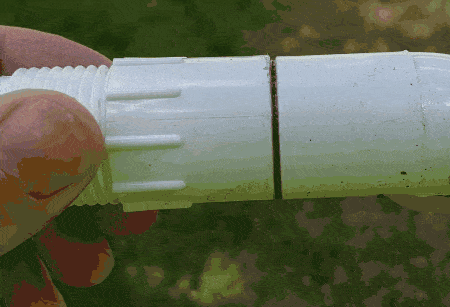
Durability | Pros & Cons of Vinyl
This section describes how well vinyl withstands everyday abuse over the course of its lifespan. From falling objects and discolouration, to more insidious evils like mould and bacteria.
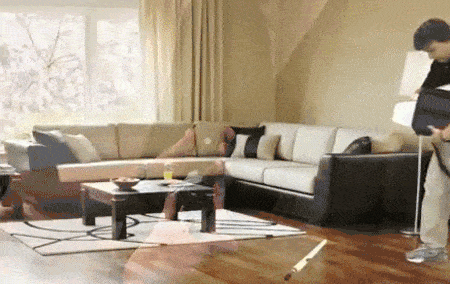
Scratch Hardness: 3/10
Scratch hardness describes how easily a material is scratched. PVC generally has a rating of 3 on the Mohs scale of hardness. A material can only be scratched by another material of equal or higher rating on this scale.
For comparison, a copper penny rates 3, while your fingernail rates 2.5. Consequently, this rating means vinyl floors are easily scuffed or scratched by chair legs or fine grit underfoot.
We recommend darker designs or tougher materials if you’re stickler for floor appearances.
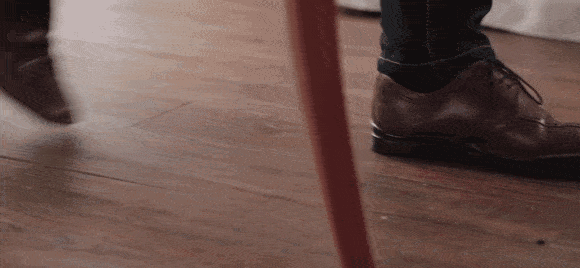
Indentation Hardness: 6/10
Indentation hardness describes how easily a material gets dented by a prolonged force, like the weight of a heavy bookshelf.
PVC is one of the harder commercially-produced plastics and recovers from impacts and extended compressions relatively well. However, it is known to dent permanently from time to time. Beware of dropping heavy loads like tools or gym weights around it.
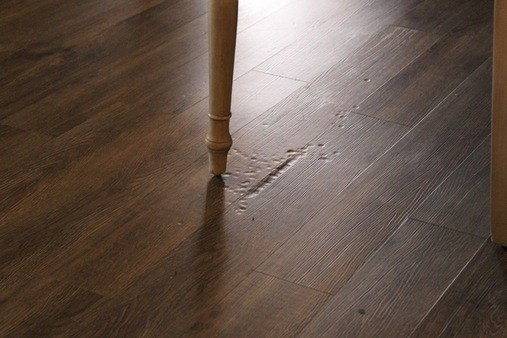
Ageing: 3/10
Vinyl is generally not a long-term flooring solution. Instead, its low-cost allows it to be replaced as it is damaged. A rather frequent occurrence, considering its low scratch hardness.
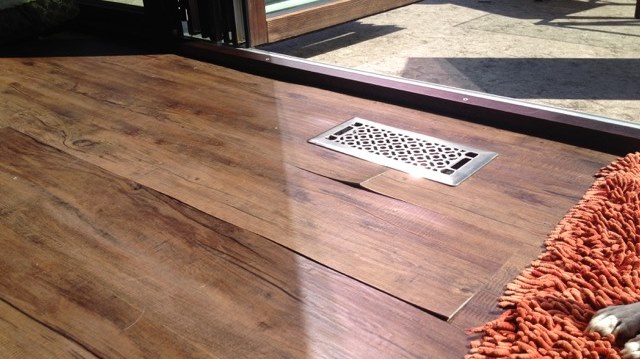
Poor Water Resistance | Pros & Cons of Vinyl
Vinyl has the advantage of being water-proof, considering it neither absorbs nor reacts with water.
However, depending on how your vinyl flooring is installed. A significant amount of water can seep beneath the vinyl tiles, allowing bacteria or mould to breed in recesses that are almost impossible to clean.
Short of ripping out your entire floor, at least.
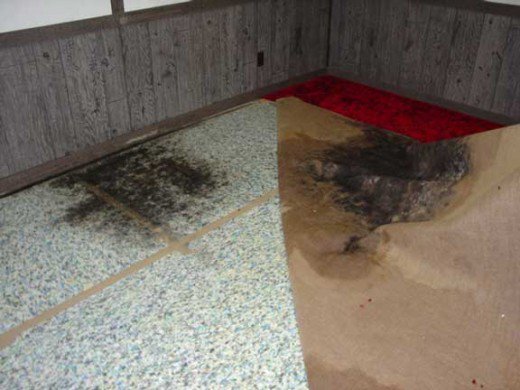
Stain & Chemical Resistance | Pros & Cons of Vinyl
Vinyl is also infamous for its reaction to rubber. Even the briefest contact with natural rubbers, like those in shoe heels, can permanently discolour the material.
This chemical reactivity extends to certain acids and bases. This means strong household cleaners will discolour and denature your vinyl flooring. Denatured vinyl often starts peeling or cracking.
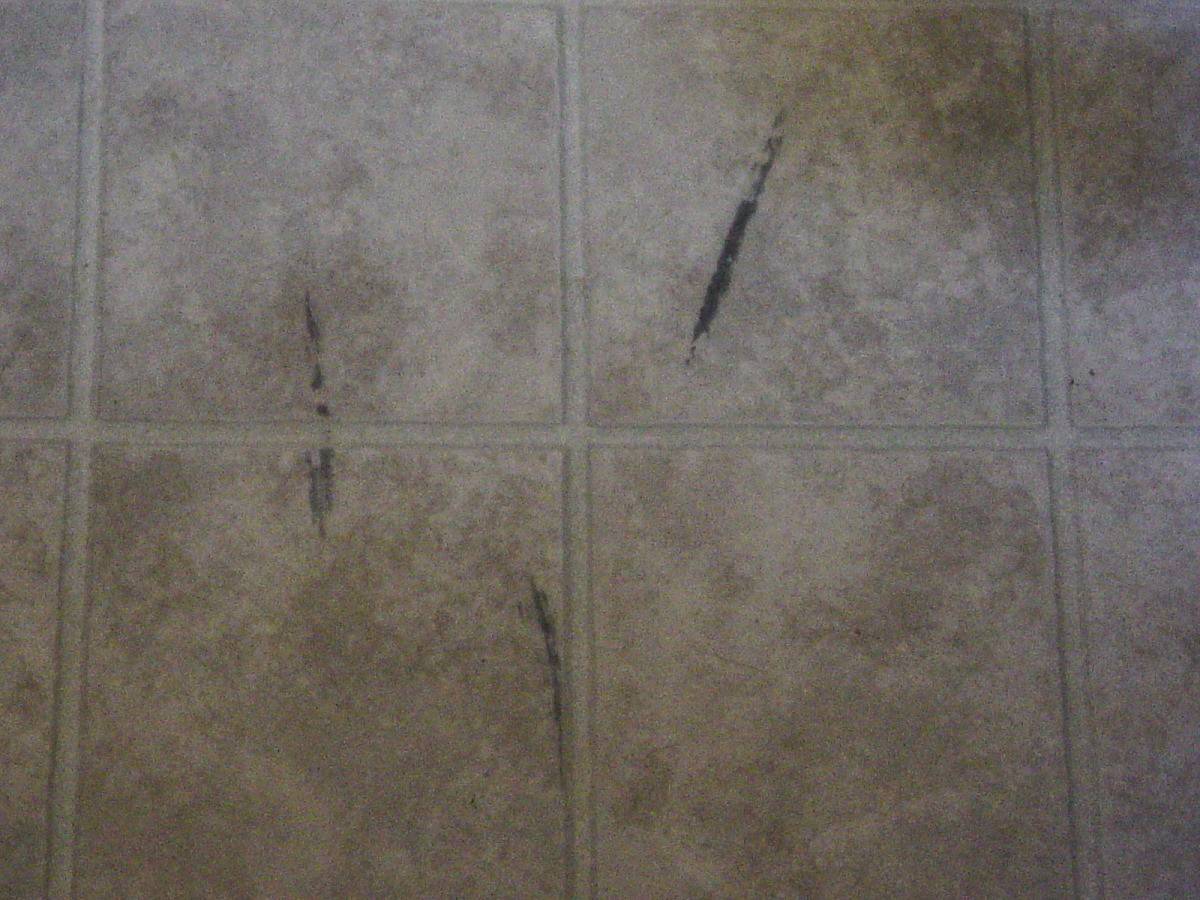
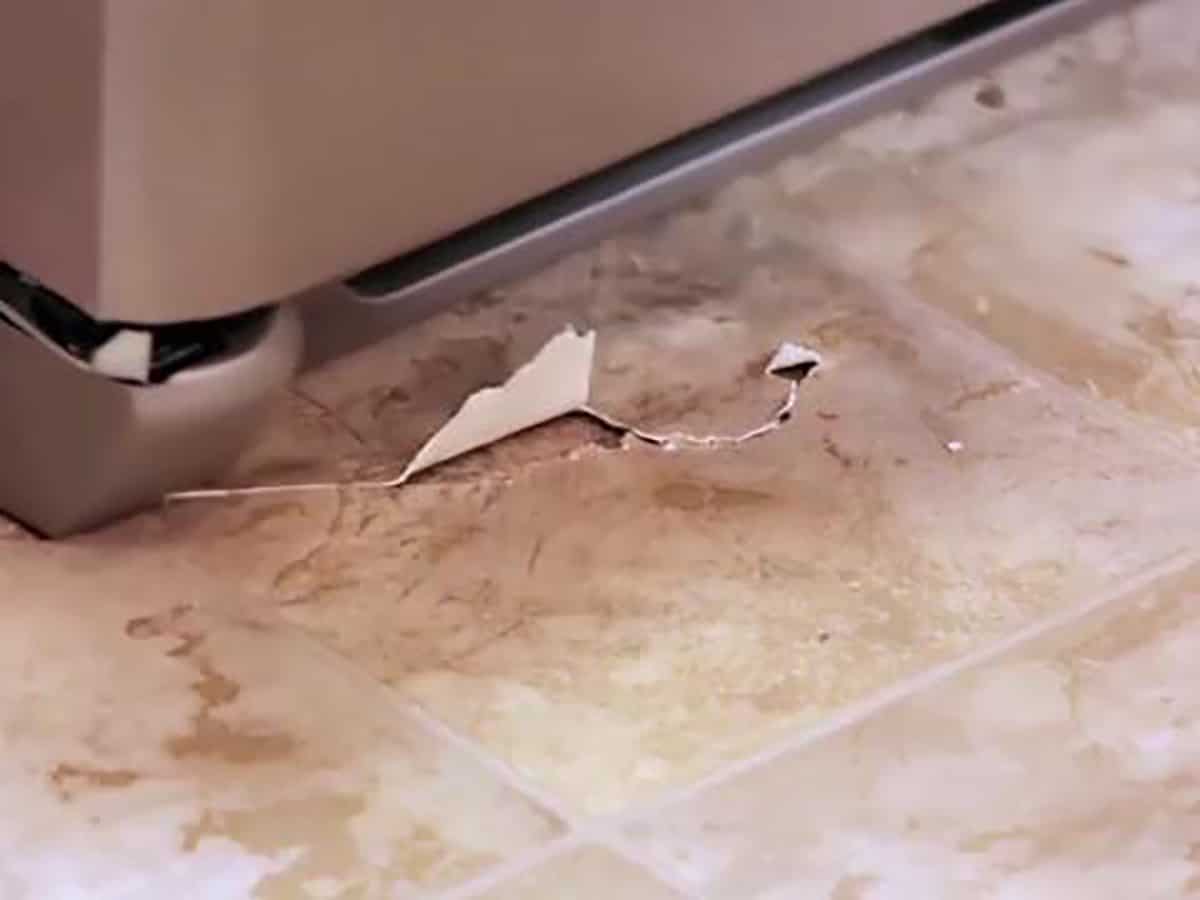
Things to Note | Pros & Cons of Vinyl
Like other cheap materials, vinyl’s strength lies in its replaceability. Vinyl tiles are small and affordable, allowing you to replace damaged sections at will.
However, tile designs that are unusual or near the end of their production life may run out a year or two after you first install them. Thus, it is a necessary burden for owners of vinyl flooring to stockpile a healthy number of tiles for replacement or go with a generic and commonly available design.
Hygiene | Pros & Cons of Vinyl
Porosity: 6/10
The number of pores on vinyl is often related to its price and quality. High-quality vinyl is smoother and has fewer pores than cheaper versions.
If you’re a loyal follower of this blog, you might know that no homeowner wants a porous floor. Pores trap dirt and organic debris, giving bacteria and mould room and board to flourish.
Since vinyl doesn’t deal well with strong cleaners, we highly recommend getting high-quality vinyl tiles if you wish to use the material.
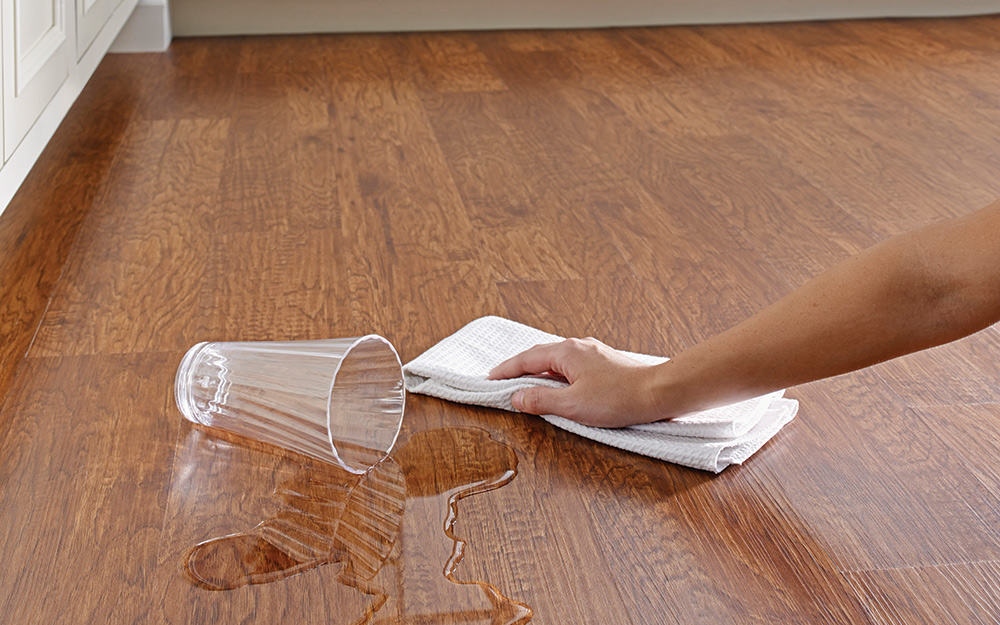
Corrosion Resistance: 4/10
Vinyl is tough plastic, but it doesn’t fare well against strong chemical agents such as bleach. If you absolutely must disinfect your vinyl surface with bleach. Ensure that you strictly follow the manufacturer’s instructions and dilute your bleach accordingly.
However, do note that even when diluted, strong cleaning chemicals will break down vinyl over time. Do avoid using them too often or leaving them on too long.
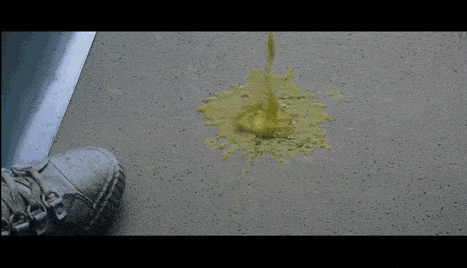
Aesthetics | Pros & Cons of Vinyl
This section is about the look and feel of a vinyl floor. Since these properties are perceived so subjectively, this section will omit any scoring. It’s entirely up to you, as a homeowner, to decide if the material’s aesthetics are a pro or con.
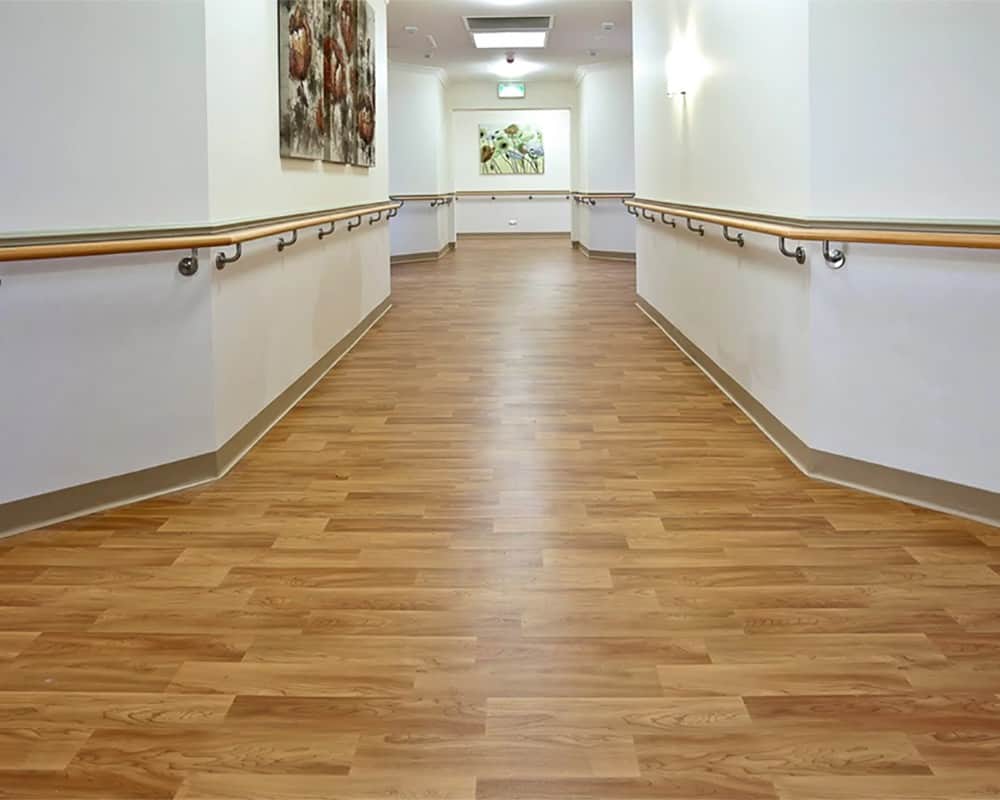
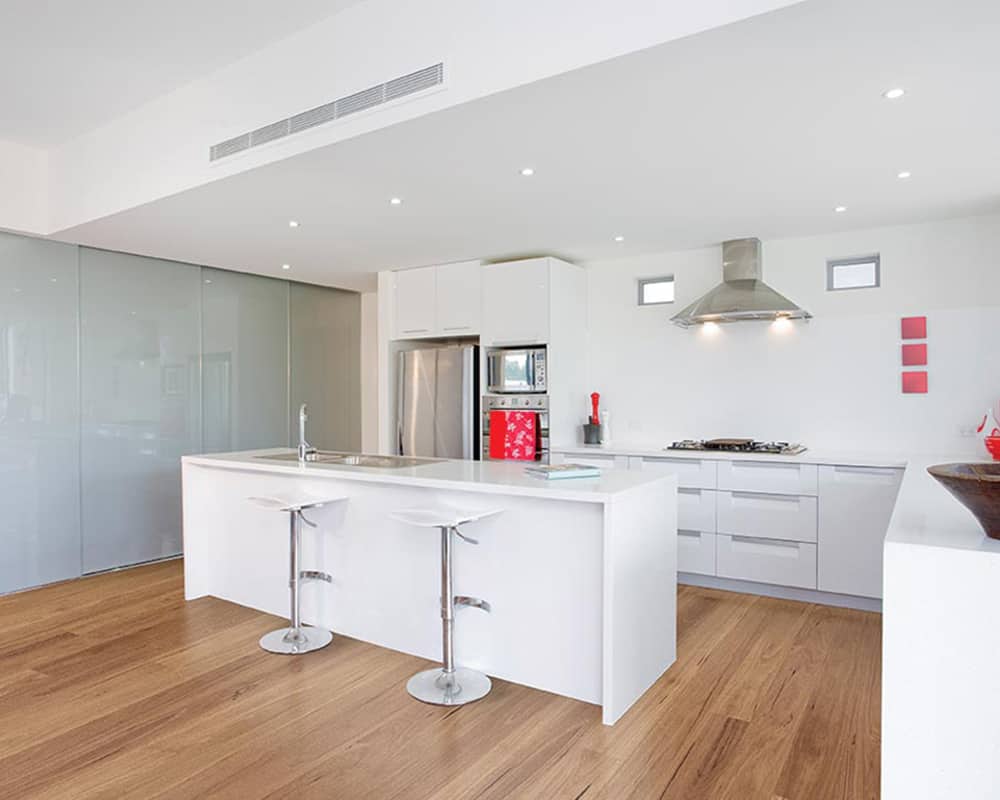
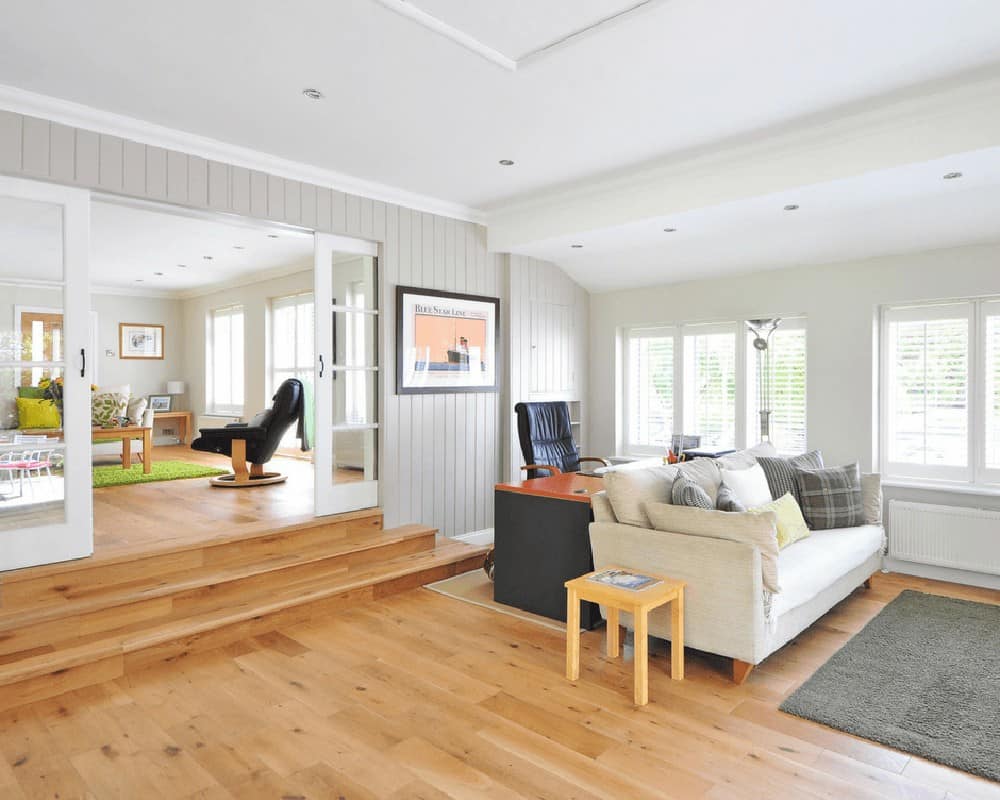
Appearance | Pros & Cons of Vinyl
Appearance-wise, vinyl surfaces are versatile and come in many colours and designs. Pricier options also include some texturing, if you’re inclined.
As a plastic, vinyl possesses the ability to absorb vibrations. If you’re fond of playing loud music or working out at home, a vinyl flooring will help maintain a friendly relationship with your neighbours.
Vinyl floorings are also less chilly than marble or ceramic tiles, and quieter than hardwood flooring.
The Big Question | Pros & Cons of Vinyl
At the end of the day, is vinyl the right flooring for you? Here are some things you should consider.
Damaged tiles or frequent replacements. Replacing tiles yourself or putting up with frequent contractor visits. Lastly, storing a heap of tiles at home.
Conclusion
Answering yes to these questions is difficult for most, especially if you’re environmentally conscious.
Unlike other materials, vinyl is inefficient to recycle. Hence, every time you replace a vinyl tile. The old one simply takes up more space at a landfill or contributes to global warming in an incineration plant.

Alternative Solution
If you’re looking for a material that has synthetic toughness and a huge range of design options. We suggest checking out Metallic Epoxy for your Floors and Countertops.
Aside from a ridiculous resistance to physical damage and chemical attack (Advantages of Metallic Epoxy). Metallic Epoxy can be customised to pretty much any colour and pattern the mind can conjure.
For more on this wonder material, read one of our posts on the subject. If you’ve already heard of it and want more personalised information, drop us a message for a free consultation with an expert.
Check out our other posts on The Best Epoxy Flooring Guide in Singapore and Best Epoxy Floor Maintenance Tips.
More information which you may find useful
1) More of our Services – Click Here
2) View our Past Works – Click Here
3) Metallic Epoxy Stress Test – Click Here
4) Pros & Cons of Hardwood – Click Here
5) Pros & Cons of Wood Laminate – Click Here
6) Pros & Cons of Marble – Click Here
7) Best Interior Surfacing Materials – Click Here
Pros & Cons of Vinyl
Vinyl
Advantages & Disadvantages of Vinyl include two key, this is a clear base and powder. They mix to form a blend, producing a glossy, nice look effect after complete. Shop here and check out our other services here.
Pour over the Bathroom, or solid top. They move through the floor as it cures and can with a paintbrush or roller to create effects such as swirls, ripples, craters, or waves. When the Bathroom hardens, these powders are in place, resulting in a beautiful, nice look.
Each epoxy Bathroom is special due to the nature of the powder holding. Skill and mind are critical to achieving the appearance and feel of the surface.
Metallic Epoxy include two key, this is a clear base and powder. They mix to form a blend, producing a glossy, nice look effect after complete.
Pour over the Art Panel, or solid top. They move through the floor as it cures and can with a paintbrush or roller to create effects such as swirls, ripples, craters, or waves. When the Epoxy hardens, these powders are in place, resulting in a beautiful, nice look.
Our Bathroom is special due to the nature of the powder holding. Skill and mind are critical to achieving the appearance and feel of the surface.
Metallic Epoxy Vinyl
Vinyl
Epoxy Bathroom include two key, this is a clear base and powder. They mix to form a blend, producing a glossy, nice look effect after complete.
Pour over the Bathroom, or solid top. They move through the floor as it cures and can with a paintbrush or roller to create effects such as swirls, ripples, craters, or waves. When the Bathroom hardens, these powders are in place, resulting in a beautiful, nice look.
Each epoxy Bathroom is special due to the nature of the powder holding. Skill and mind are critical to achieving the appearance and feel of the surface.
Metallic Epoxy Bathroom include two key, this is a clear base and powder. They mix to form a blend, producing a glossy, nice look effect after complete.
Pour over the Art Panel, or solid top. They move through the floor as it cures and can with a paintbrush or roller to create effects such as swirls, ripples, craters, or waves. When the Epoxy hardens, these powders are in place, resulting in a beautiful, nice look.
Our Bathroom is special due to the nature of the powder holding. Skill and mind are critical to achieving the appearance and feel of the surface.
Metallic Epoxy Bathroom
Advantages & Disadvantages of Vinyl
Epoxy Bathroom include two key, this is a clear base and powder. They mix to form a blend, producing a glossy, nice look effect after complete.
Pour over the Bathroom, or solid top. They move through the floor as it cures and can with a paintbrush or roller to create effects such as swirls, ripples, craters, or waves. When the Bathroom hardens, these powders are in place, resulting in a beautiful, nice look.
Each epoxy Bathroom is special due to the nature of the powder holding. Skill and mind are critical to achieving the appearance and feel of the surface.
Metallic Epoxy Bathroom include two key, this is a clear base and powder. They mix to form a blend, producing a glossy, nice look effect after complete.
Pour over the Art Panel, or solid top. They move through the floor as it cures and can with a paintbrush or roller to create effects such as swirls, ripples, craters, or waves. When the Epoxy hardens, these powders are in place, resulting in a beautiful, nice look.
Our Bathroom is special due to the nature of the powder holding. Skill and mind are critical to achieving the appearance and feel of the surface.
Metallic Epoxy Bathroom
Vinyl
Epoxy Bathroom include two key, this is a clear base and powder. They mix to form a blend, producing a glossy, nice look effect after complete.
Pour over the Bathroom, or solid top. They move through the floor as it cures and can with a paintbrush or roller to create effects such as swirls, ripples, craters, or waves. When the Bathroom hardens, these powders are in place, resulting in a beautiful, nice look.
Each epoxy Bathroom is special due to the nature of the powder holding. Skill and mind are critical to achieving the appearance and feel of the surface.
Metallic Epoxy Bathroom include two key, this is a clear base and powder. They mix to form a blend, producing a glossy, nice look effect after complete.
Pour over the Art Panel, or solid top. They move through the floor as it cures and can with a paintbrush or roller to create effects such as swirls, ripples, craters, or waves. When the Epoxy hardens, these powders are in place, resulting in a beautiful, nice look.
Our Bathroom is special due to the nature of the powder holding. Skill and mind are critical to achieving the appearance and feel of the surface.
Metallic Epoxy Bathroom
Bathroom
Epoxy Bathroom include two key, this is a clear base and powder. They mix to form a blend, producing a glossy, nice look effect after complete.
Pour over the Bathroom, or solid top. They move through the floor as it cures and can with a paintbrush or roller to create effects such as swirls, ripples, craters, or waves. When the Bathroom hardens, these powders are in place, resulting in a beautiful, nice look.
Each epoxy Bathroom is special due to the nature of the powder holding. Skill and mind are critical to achieving the appearance and feel of the surface.
Metallic Epoxy Bathroom include two key, this is a clear base and powder. They mix to form a blend, producing a glossy, nice look effect after complete.
Pour over the Art Panel, or solid top. They move through the floor as it cures and can with a paintbrush or roller to create effects such as swirls, ripples, craters, or waves. When the Epoxy hardens, these powders are in place, resulting in a beautiful, nice look.
Our Bathroom is special due to the nature of the powder holding. Skill and mind are critical to achieving the appearance and feel of the surface.
Metallic Epoxy Bathroom
Bathroom
Epoxy Bathroom include two key, this is a clear base and powder. They mix to form a blend, producing a glossy, nice look effect after complete.
Pour over the Bathroom, or solid top. They move through the floor as it cures and can with a paintbrush or roller to create effects such as swirls, ripples, craters, or waves. When the Bathroom hardens, these powders are in place, resulting in a beautiful, nice look.
Each epoxy Bathroom is special due to the nature of the powder holding. Skill and mind are critical to achieving the appearance and feel of the surface.
Metallic Epoxy Bathroom include two key, this is a clear base and powder. They mix to form a blend, producing a glossy, nice look effect after complete.
Pour over the Art Panel, or solid top. They move through the floor as it cures and can with a paintbrush or roller to create effects such as swirls, ripples, craters, or waves. When the Epoxy hardens, these powders are in place, resulting in a beautiful, nice look.
Our Bathroom is special due to the nature of the powder holding. Skill and mind are critical to achieving the appearance and feel of the surface.


1 comments